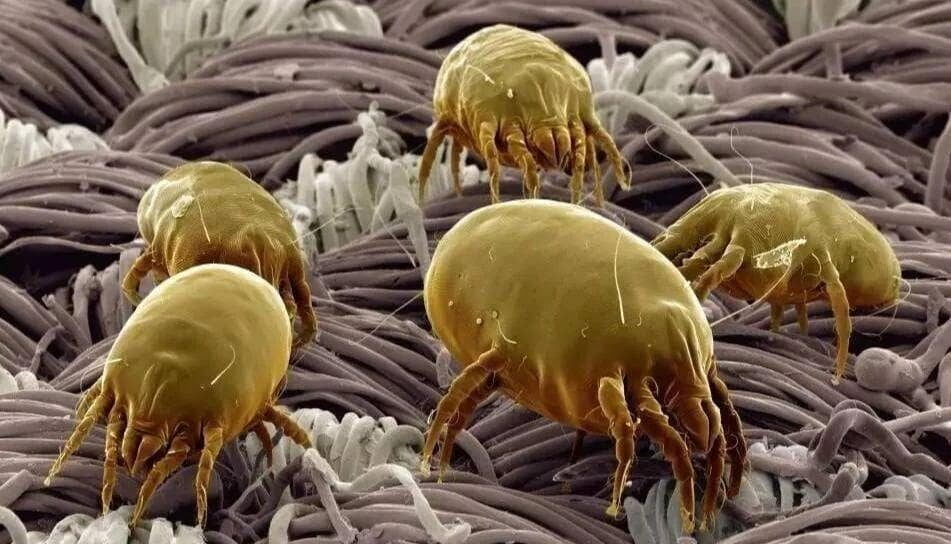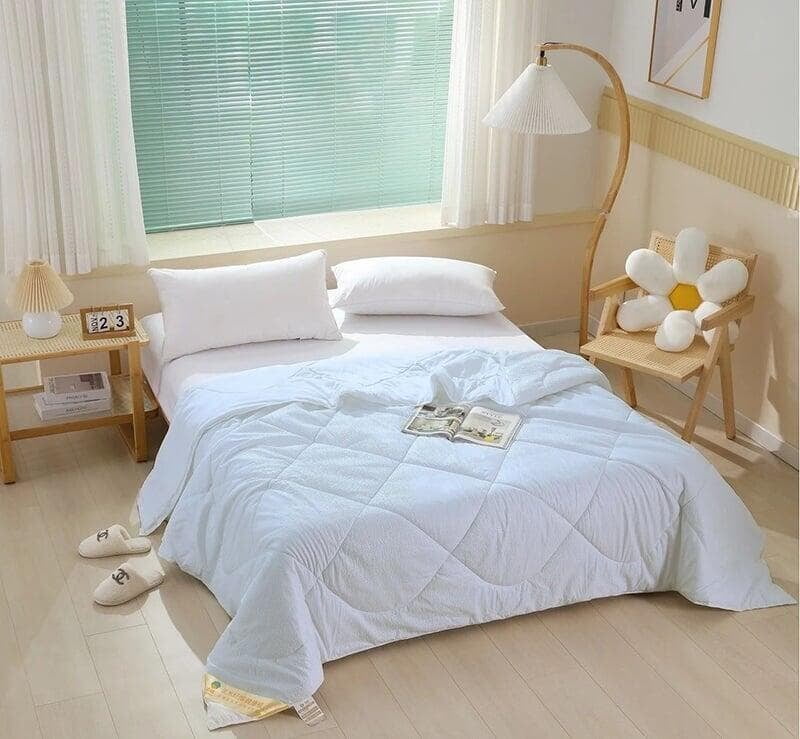The anti-mite principle of polylactic acid (PLA) fiber is mainly due to its weakly acidic surface, which can inhibit the growth of microorganisms and has a natural and stable anti-bacterial and anti-mite effect. PLA textiles are being recognized by more and more consumers, and its market prospect is broad.
The dangers of mites
Mites are a group of tiny arthropods belonging to the class Arachnida, including many species, the common ones being dust mites and bed mites. Dust mites mainly feed on dander, sweat, and secretions shed by people, and reproduce at an unusually rapid rate. They are mainly found on sofas, covers, quilts, pillows and cushions. Mites not only cause harm to human skin, but may even invade the human respiratory system, causing serious health problems.

Due to mattresses, sofas, bedding and pillows and human contact time is longer, the temperature and humidity is relatively high, and has a dust mite like to eat human dander, and thus the highest rate of mite breeding. In addition, modern living room commonly used velvet material floor curtains, not easy to wash, often accumulate or adsorption of dust; if man-made fabrics, due to static electricity may also adsorption of cotton staple fibers, wool staple fibers, as well as the human body off the dander. These natural plant fibers and human shed dander, are the ideal food for dust mites, so the mites in the room can also inhabit the curtains, breeding.
How Polylactic Acid Fiber Resists Mites
PLA fiber is a completely biodegradable synthetic fiber, which can be obtained from grains. Its products can be decomposed into carbon dioxide and water by microorganisms in soil or seawater after being discarded, and when burned, it will not emit poisonous gas or cause pollution. It is a sustainable ecological fiber.

The anti-dust mite principle of PLA fiber is mainly due to its weakly acidic surface, which can inhibit the growth of microorganisms and has a natural and stable anti-bacterial and anti-dust mite effect. PLA fibers prepared by melt spinning process, by weaving the densified fibers into fabrics, can inhibit the amount of dust dispersal in quilts to 1/38 of cotton textiles, and at the same time prevent the invasion of mites, the vector of pathogenic bacteria. In addition, PLA fibers have good biodegradability, excellent luster, UV resistance, outstanding flame retardancy, natural skin friendliness, and excellent tactility, while exhibiting unique characteristics such as excellent curling properties, breathability and perspiration, anti-bacterial and anti-mite properties, as well as fluffiness and good elasticity.

